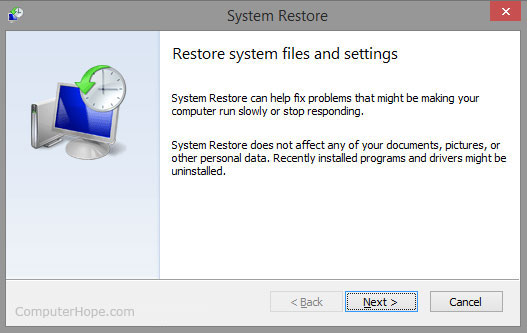

Using a restore point will remove any applications and drivers that were installed after the restore point was created. This is quite useful in cases when a recently installed program, game or app causes the system to run poorly, crash frequently, or trigger unexpected delays. System Protection creates restore points A Windows 8 custom refresh image backs.

System Restore creates a snapshot of your working system so you can restore to it in the future if anything happens to your PC. Use the Windows Disk Cleanup utility to delete temporary files To use. Here we will find the best approach to use System Restore by sizing up its full impact on a Windows system.Īlso read: 3 of the Best Tools to Manage System Restore Points in Windows What Does System Restore Do? While useful, System Restore can have a tangible impact on your Windows system, mainly due to installation failures or data corruption in a previous state. This can be a big lifesaver in many situations and is considered best practice to create a number of system restore points from time to time. System Restore is a handy feature to return your Windows PC to an earlier point in time.


 0 kommentar(er)
0 kommentar(er)
